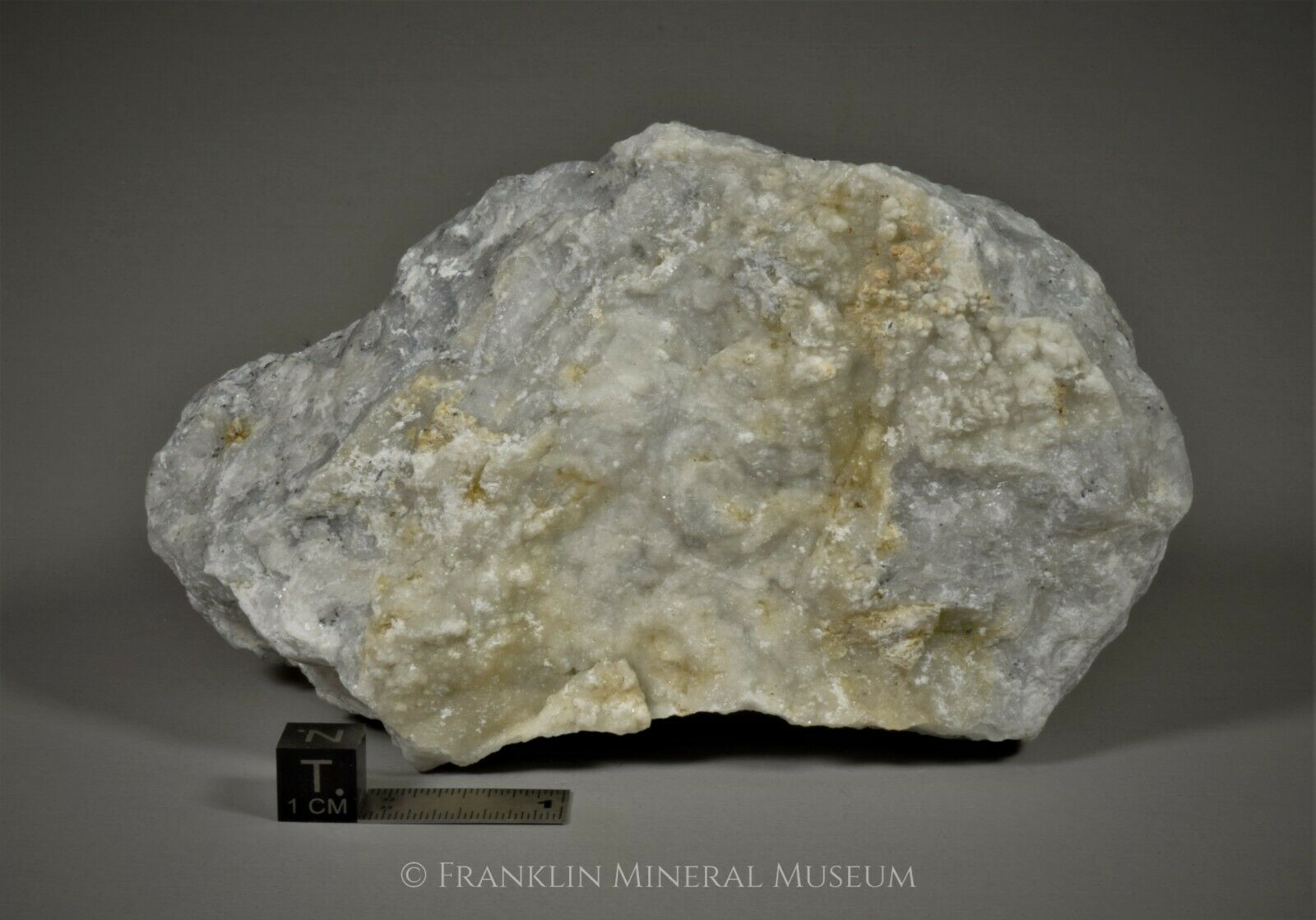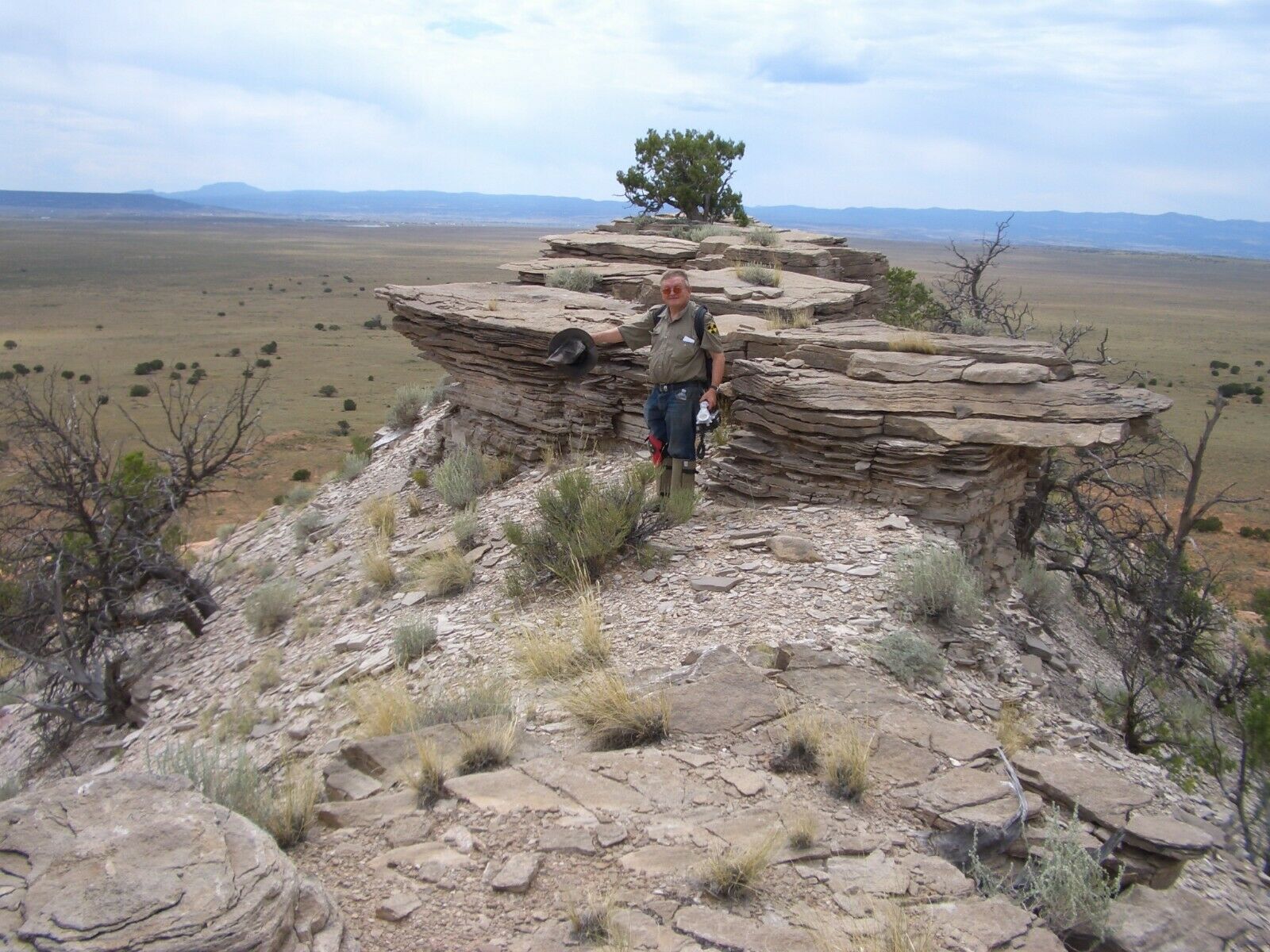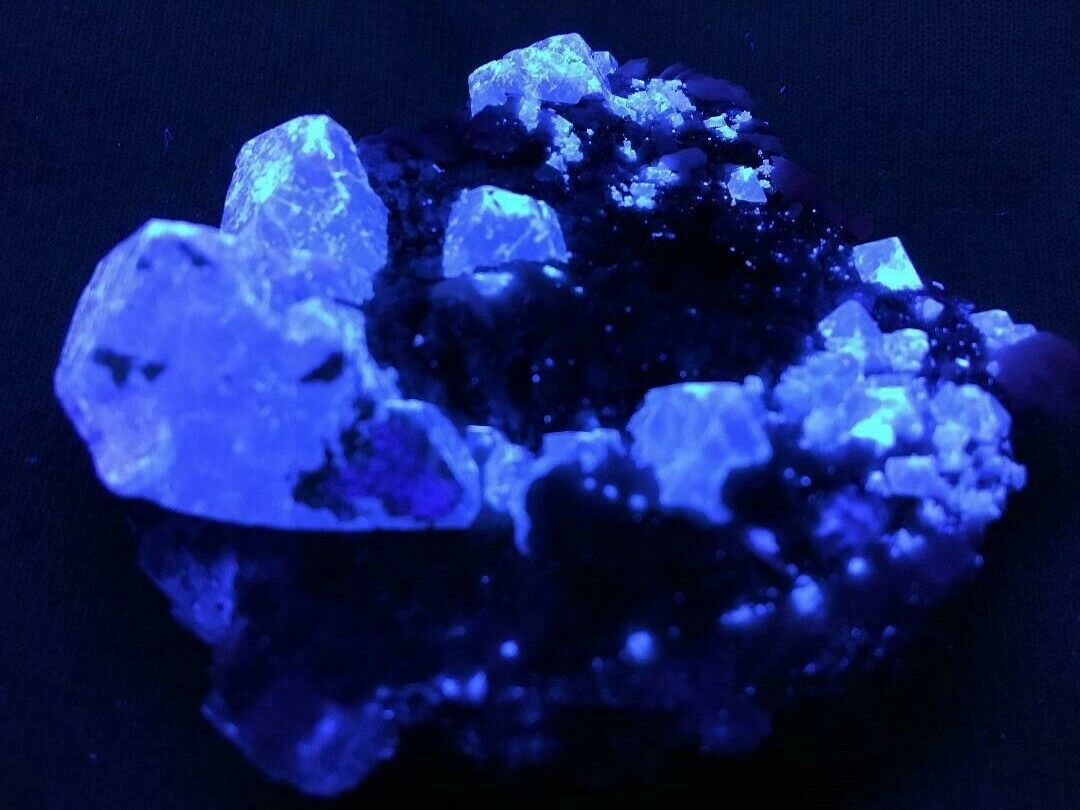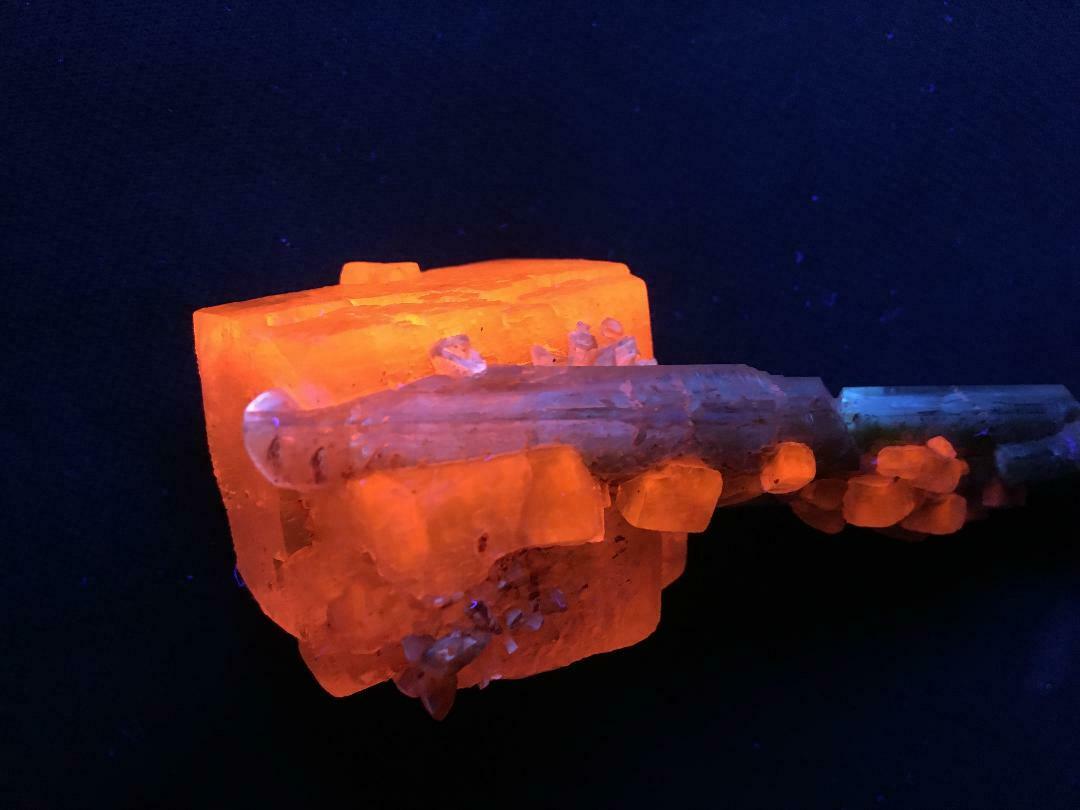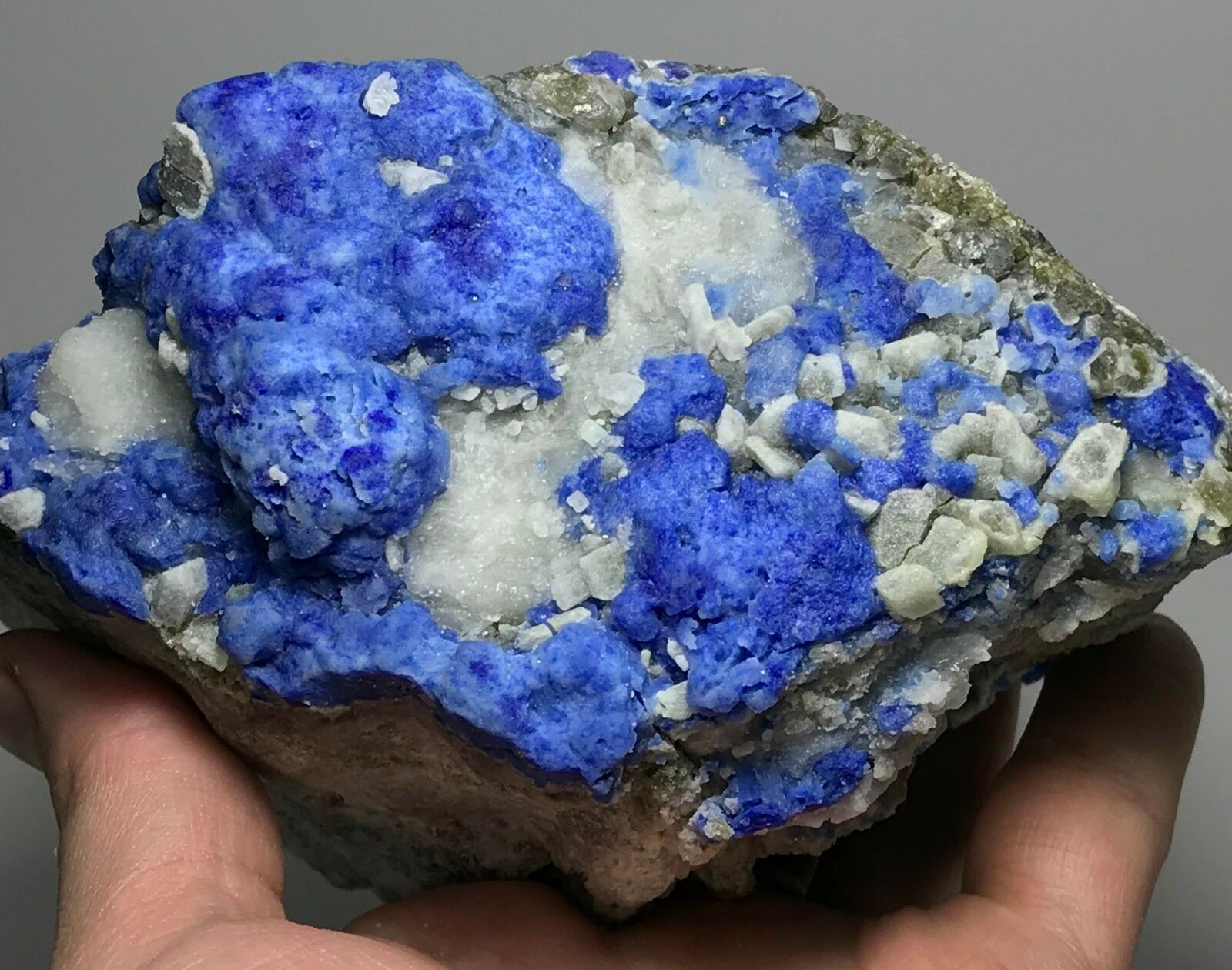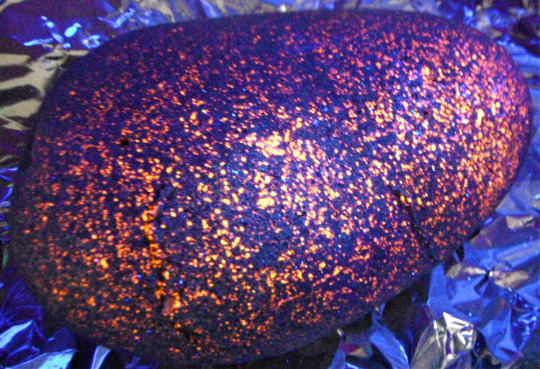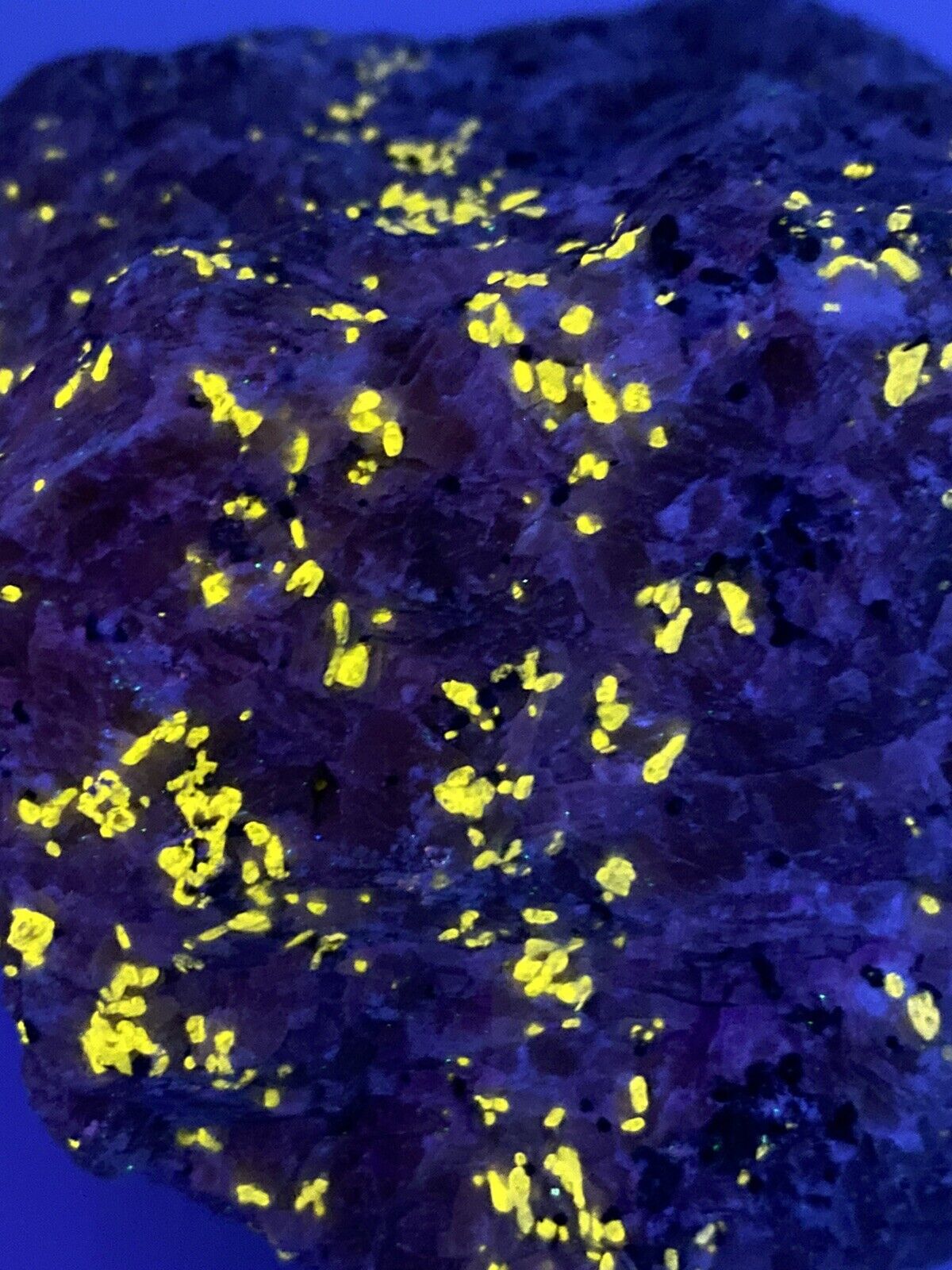-40%
Aragonite - Whispering Woods, Ogdensburg, NJ
$ 13.2
- Description
- Size Guide
Description
Aragonite on calcite. Here we have an atypical example of aragonite. The aragonite in this specimen occurs as a thin crystalline layer formed upon a matrix of coarse white opaque calcite, some of which may be transitioning to dolomite. Scattered throughout the calcite are flakes of metallic gray graphite. Close examination will reveal the crystalization of the thin aragonite layer. Aragonite is the Aragonite Group's principal member, and aragonite is the second most common polymorph of natural calcium carbonate (the most common is calcite). It is significantly less widespread and abundant than calcite and is formed under a much narrower range of physicochemical conditions. It is metastable relative to calcite and often converts to calcite accompanying changes in the environment. It is nearly always a low-temperature, near-surface mineral.This specimen is from a locality known as the Whispering Woods Development. It is located off Passaic Avenue/Sterling Hill Road, on the border of Sparta Township and Ogdensburg Borough. It is located just 1,600 feet northwest of the world-renown Sterling Hill zinc deposit, essentially across the street on the northern side of the Sterling mine. This locality is presumably within the main Franklin Marble belt. This type of aragonite is most likely overlooked as it would be somewhat difficult to see due to a lack of daylight contrast. And this type of aragonite differs significantly from the world-renown giant sprays and crystal clusters from the Mud Zone in the Sterling mine. The matrix is known as the Franklin Marble, the host rock of the Franklin and Sterling Hill zinc deposits. Even without the zinc deposits at Franklin and Sterling Hill, the Franklin Marble would be a well-known mineral locality in its own right. Aragonite and graphite are some of many mineral species to occur in the marble, of which there are as many as 50 species. The Franklin Marble is classified as a metasedimentary deposit and dates to 1.1 billion years old. The aragonite does fluoresce a pale blue-white, with a pale orange section, under shortwave (254nm) ultraviolet light. There is a brief (~5 seconds) phosphorescence. A neat example of one of the rarely collected mineral species from the Franklin Marble.
Dimensions are
14x8.4x6.5cm - 5½x3¼x2½in.
Please note the centimeter cube and inch bar for scale.
Weight in grams and ounces:
801.3g - 28.27oz.
From the
Whispering Woods Development, Ogdensburg, NJ
The previous collection this specimen was is
#154, Warren Miller with the attached tag that reads WM1290.
#154 is the museum's Collection Sale number previously offered in the museum shop.
>>> We do
COMBINED SHIPPING
for multiple items. To
request
an invoice from us that combines shipping
ALWAYS
, click the
Add to cart
button on eBay to add items until you are done.
DO NOT PROCEED
to checkout; instead, click the
Request Total from Seller
button. <<<
=== There is an instructional video on how to request combined shipping is here
https://www.youtube.com/watch?v=FvDe7Fg7R4Q
===
All potential buyers need to be aware that being able to view fluorescent minerals requires an ultraviolet lamp. Most of the minerals from the Franklin and Sterling Hill zinc mining district fluoresce under
shortwave ultraviolet light
.
The shortwave wavelength is
254nm
or otherwise known as
UV C
. Always read the description carefully to determine if the main mineral of interest for a particular specimen will fluoresce.
ALL
fluorescent minerals depicted in our storefront are illuminated by two (2) 9 watt Triple short/mid/longwave AC Model 9SM-110 Way Too Cool LLC ultraviolet lamps, and the shortwave tubes and filters were replaced in late 2018.
There are several available brands and models of ultraviolet lights on eBay and other online sources. For further information on ultraviolet light and fluorescent minerals, copy and paste the following and go to >>>
geology.com/articles/fluorescent-minerals
.
>>>>
We Buy Collections
<<<<
DISCLAIMER: Every reasonable effort was made to identify the mineral species noted in each specimen accurately. The occasional label from previous collection(s) may misidentify some species, and the current title and description here reflect the latest mineral species identification.
A modest effort was made to depict a fluorescent specimen accurately as possible.
In some cases, overexposure should be expected in select photographs to compensate for a fluorescent specimen's weak response.
All buyers should exercise safe viewing practices regarding the use of ultraviolet light. Visual dark adaption is highly recommended in the optimal viewing of fluorescent minerals. Buyers should also be aware of what type of lighting to view the specimens under. This can result in perceived differences of color and contrast due to color and contrast shifting under various kinds of lights available.
All photographs were taken with a Nikon D5300 digital camera with a Nikon DX AF-S 18-55mm lens attached with a UV filter. Lighting was done with a pair of OSRAM 8.5 watt LED A19 5000K 800 lumens bulbs in brushed aluminum reflectors. The photographs were processed on a color-calibrated flat panel monitor. Do note the Imperial measurement conversion is the nearest equivalent to the listed metric measurement.
--- All photographs appearing on this listing or any other Franklin Mineral Museum listing are the property of the Franklin Mineral Museum. Photographs
can be used strictly for personal use onl
y
. Otherwise, the photographs posted here are protected by U.S. Copyright Laws. They are not to be downloaded or reproduced for public use or distribution in any way without the written permission of the Franklin Mineral Museum. ---
